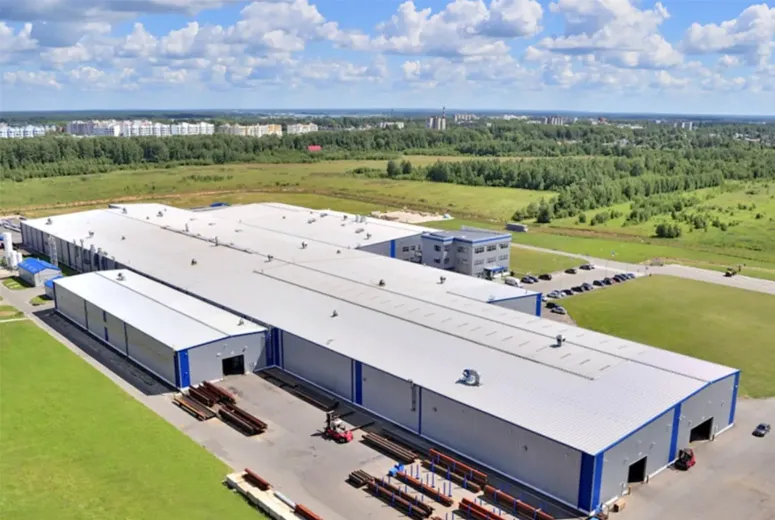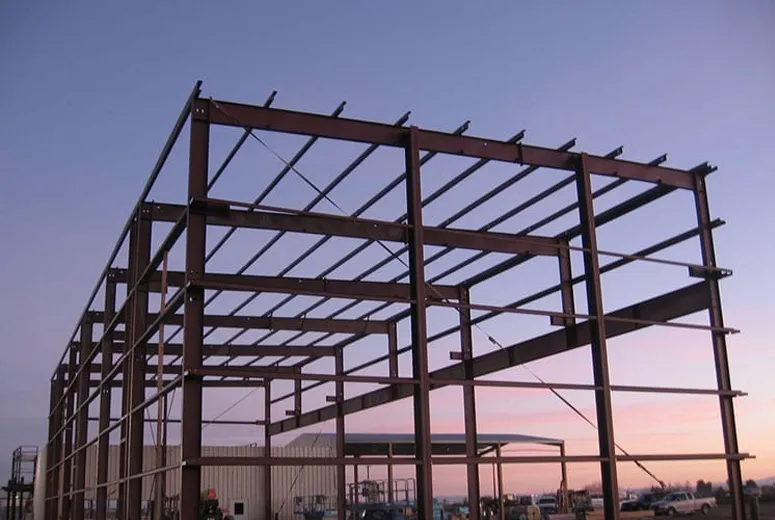Steel structure buildings have become a cornerstone of modern construction due to their exceptional performance and versatility. Here are the key features that define these structures:
1. High Strength and Lightweight Design
Steel offers unparalleled strength while being relatively lightweight. This combination allows steel structures to support heavier loads and reduce foundation stress. Additionally, their lightweight nature enhances seismic resistance and provides greater design flexibility for architects and engineers.
2. Durability and Sustainability
Steel is highly durable and resistant to corrosion when treated with galvanization or protective coatings, ensuring a long service life. Moreover, steel is a recyclable material, making it an environmentally friendly choice that aligns with sustainable development goals by minimizing construction waste.
3. Rapid Construction and Efficiency
Steel components are prefabricated in factories, which allows for precise manufacturing and quick assembly on-site. This significantly shortens construction timelines, making steel structure buildings ideal for projects requiring fast completion, such as warehouses, industrial facilities, and exhibition centers.
4. Design Flexibility and Aesthetic Appeal
Steel's adaptability enables the creation of large spans and complex architectural designs. Its malleability allows for innovative and customized solutions that enhance both functionality and aesthetics, meeting diverse project requirements.
In summary, steel structure buildings are redefining construction standards with their high strength, durability, efficiency, and environmental benefits. These features make them an excellent choice for a wide range of applications, from industrial complexes to commercial spaces, ensuring they remain a top choice in the building industry.
What is a Steel Building Structure?
A steel building structure is a type of construction where the primary load-bearing components are made of steel. These structures are widely used in modern construction due to their strength, durability, and versatility. Steel, an alloy of iron and carbon, is engineered to withstand heavy loads and environmental stresses, making it an ideal material for diverse applications.
Steel building structures typically consist of several key components, including columns, beams, trusses, and frames. These elements are prefabricated in factories to precise specifications and assembled on-site. This prefabrication process ensures high-quality standards, reduces construction time, and minimizes waste.
One of the most notable features of steel structures is their ability to span large areas without requiring intermediate supports. This makes them highly suitable for industrial warehouses, commercial buildings, sports arenas, and aviation hangars. Their adaptability allows architects to design complex shapes and unique aesthetics while maintaining structural integrity.
In addition to their design flexibility, steel structures are eco-friendly. The material is 100% recyclable and reusable, aligning with global sustainability goals. They are also highly resistant to natural forces such as earthquakes and strong winds, providing safety and reliability.
In summary, a steel building structure represents a modern, efficient, and sustainable solution for various construction needs, combining strength, adaptability, and environmental consciousness. This has made them a preferred choice across industries and architectural styles.
Is Steel Structure Better Than Concrete?
Whether a steel structure is better than concrete depends on the specific requirements of a project, as both materials have unique advantages. However, steel structures are often favored for their strength, efficiency, and versatility in certain applications.
Steel offers superior strength-to-weight ratio compared to concrete. This means steel structures can handle heavier loads while being lighter in overall weight. This feature makes them ideal for projects requiring large spans, such as bridges, stadiums, and high-rise buildings, where minimizing foundation stress is critical.
In terms of construction speed, steel structures outperform concrete. Steel components are prefabricated in factories and then quickly assembled on-site, significantly reducing construction timelines. This efficiency makes steel structures an excellent choice for projects with tight deadlines.
Steel structures also offer design flexibility, as the material can be molded into complex shapes and large open spaces without the need for intermediate supports. This adaptability enhances architectural creativity and functionality.
On the other hand, concrete is more cost-effective for certain projects, especially where mass and rigidity are required, such as residential buildings and dams. Additionally, concrete provides better fire resistance and thermal insulation compared to steel.
While both materials have their strengths, steel structures excel in projects requiring speed, strength, and versatility. The choice ultimately depends on the specific goals of the construction project, budget, and environmental considerations. In many cases, combining steel and concrete achieves the best of both worlds.

















